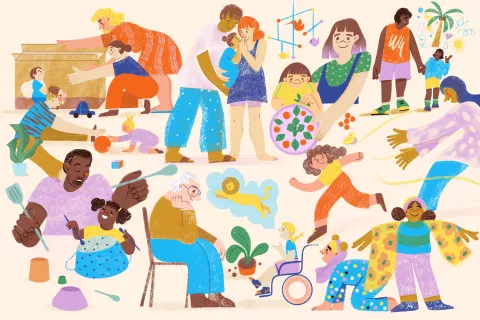Keeping Children Safe Online
Parenting tips during COVID-19 outbreak
- Available in:
- English
- Tiếng Việt
Children and teens are now spending a lot more time online. Being connected helps them reduce the impact of COVID-19 and encourages them to continue with their lives…but it also presents risks and dangers.
Online Risks
- Adults targeting children for sexual purposes on social media, gaming, and messaging platforms
- Harmful content – violence, misogyny, xenophobia, inciting suicide and self harm, misinformation, etc.
- Teens sharing personal information and sexual photos or videos of themselves
- Cyberbullying from peers and strangers
Tech fixes to protect your children online
- Set up parental controls
- Turn on SafeSearch on your browser
- Set up strict privacy settings on online apps and games
- Cover webcams when not in use
Create healthy and safe online habits
- Involve your child or teen in creating family tech agreements about healthy device use
- Create device-free spaces and times in your house (eating, sleeping, and playing, schoolwork)
- Help your children learn how to keep personal information private, especially from strangers – some people are not who they say they are!
- Remind your children that what goes online stays online (messages, photos, and videos
Spend time with your child or teen online
- Explore websites, social media, games, and apps together
- Talk to your teen on how to report inappropriate content (see below)
- Common Sense Media has great advice for apps, games and entertainment for different ages
Keep your children safe with open communication
- Tell your children that if they experience something online that makes them feel upset, uncomfortable, or scared, they can talk to you and you will not get mad or punish them
- Be alert to signs of distress. Notice if your child is being withdrawn, upset, secretive, or obsessed with online activities
- Create trusting relationships and open communication through positive support and encouragement
- Note that every child is unique and may use different ways to communicate. Take time to adjust your message for your child's needs. For example, children with learning disabilities, may require information in simple format.
Share with colleagues, friends and family | Spread the word | Keep children safe online
Report online violence against children:
National Child Protection Helpline 111 (24/7)




